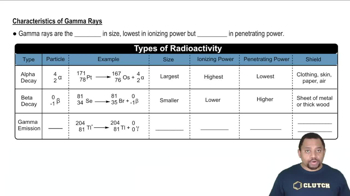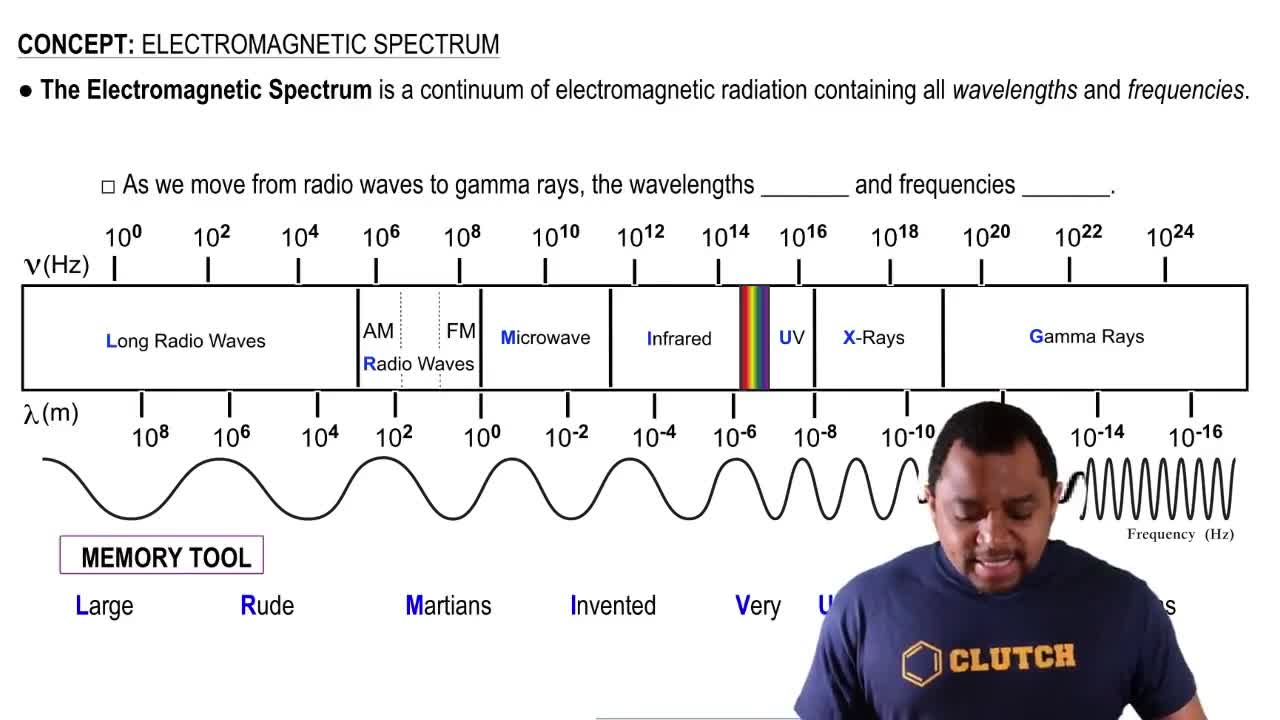Here are the essential concepts you must grasp in order to answer the question correctly.
X-ray Detection
X-ray detectors are designed to identify high-energy electromagnetic radiation, typically in the range of 0.01 to 10 nanometers in wavelength. These detectors work by converting X-ray photons into an electrical signal, which can then be measured. Understanding the energy levels and wavelengths of different types of radiation is crucial for determining whether they can be detected by X-ray detectors.
Recommended video:
Characteristics of Gamma Rays
Electromagnetic Spectrum
The electromagnetic spectrum encompasses all types of electromagnetic radiation, ranging from radio waves to gamma rays. X-rays occupy a specific region of this spectrum, characterized by their high energy and short wavelength. Familiarity with the spectrum helps in identifying the properties of various radiations and their potential for detection by specific instruments.
Recommended video:
Radiation Types
Radiation can be classified into ionizing and non-ionizing types, with X-rays being a form of ionizing radiation. Ionizing radiation has enough energy to remove tightly bound electrons from atoms, which can lead to detection by specialized instruments. Understanding the differences between these types of radiation is essential for assessing whether they can be detected by X-ray detectors.
Recommended video:
Types of Aqueous Solutions
 Verified step by step guidance
Verified step by step guidance


